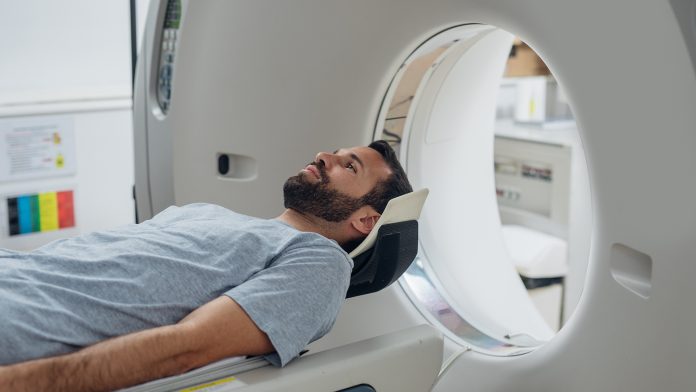
A new type of CT scan, that can light up tiny nodules in a hormone gland, has been identified as a possible treatment for high blood pressure.
Researchers from Queen Mary University of London worked with doctors from Barts Hospital and Cambridge University Hospital to develop the scan. The scan can identify tiny nodules, that are present in one-in-twenty people with high blood pressure. If they are removed, high blood pressure can be cured.
The findings could solve the 60-year problem of how to detect the hormone producing nodules without a difficult and invasive catheter study. Catheter studies are only available in a handful of hospitals and are often unsuccessful.
“Around a third of adults in the UK receive treatment for high blood pressure, increasing the risk of heart attack and stroke. That’s why this technological breakthrough, made possible through government-backed funding, is hugely encouraging,” commented Minister of State for Health Will Quince.
The researchers also discovered that the scan could detect patients who come off all their medicines after treatment for high blood pressure, if combined with a urine test.
The full findings have been published today in Nature Medicine.
Steroid hormones can lead to high blood pressure
After doctors realised that high blood pressure was caused by the steroid hormone, aldosterone, researchers examined the results of the scan on 128 participants. The scan found elevated aldosterone secretion in two thirds of patients. This secretion comes from a benign nodule in one the adrenal glands, which can be safely removed.
For most people treatment for high blood pressure will last their whole life and in the majority of cases the cause is unknown. Previous research from Queen Mary University found that in 5-10% of people with high blood pressure the cause is a gene mutation in the adrenal glands. This results in excessive amounts of aldosterone being produced.
The scan works by using a short acting dose of metomidate, a radioactive dye that sticks to the aldosterone-producing nodule. The researchers found that the scan was equally as accurate as the catheter test but was also quick and painless with 100% technical success across all participants.
Unlike the scan, catheter tests are unable to predict which patients would be completely cured of high blood pressure by surgical removal of the gland. The combination of a ‘hot nodule’ on the scan with urine steroid testing identified 18 of the 24 patients who achieved a normal blood pressure after coming off all their medication.
The scan will greatly improve treatment for high blood pressure
“These aldosterone-producing nodules are very small and easily overlooked on a regular CT scan. When they glow for a few minutes after our injection, they are revealed as the obvious cause of Hypertension, which can often then be cured. Until now, 99% are never diagnosed because of the difficulty and unavailability of tests. Hopefully this is about to change,” Professor Morris Brown, co-senior author of the study and Professor of Endocrine Hypertension at Queen Mary University of London.
“This study was the result of years of hard work and collaboration between centres across the UK. Much of the ‘on the ground’ energy and drive came from the talented research fellows who, in addition to doing this innovative work, gave selflessly of their time and energy during the national pandemic emergency. The future of research in this area is in very safe hands,” added Professor William Drake, co-senior author of the study and Professor of Clinical Endocrinology at Queen Mary University of London.









